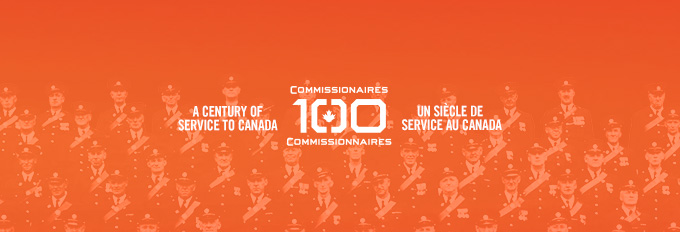
Major-General Jennie Carignan, NATO Mission Iraq commander, and British Major-General Gerald Strickland, a deputy commander with Combined Joint Task Force-Operation Inherent Resolve, consult with quick reaction force troops at Camp Taji, Iraq, on Feb. 7, 2020.
[Spc. Caroline Schofer/U.S. Army]
Prime Minister Justin Trudeau made the announcement July 3, congratulating Carignan and saying “her exceptional leadership qualities, commitment to excellence, and dedication to service have been a tremendous asset” to the forces.
“I am confident that, as Canada’s new Chief of the Defence Staff, she will help Canada be stronger, more secure, and ready to tackle global security challenges.”
She officially becomes a full general and replaces the outgoing chief, General Wayne Eyre, at a change-of-command ceremony on July 18, 2024.
Carignan inherits a military in dire straits—understaffed, underequipped, underfunded and, when it comes to women, under-represented.
An internal Defence Department presentation dated Dec. 31, 2023, and recently obtained by CBC’s Murray Brewster says just 58 per cent of Canada’s armed forces could currently respond to a crisis if called upon by NATO allies.
The presentation, which addresses issues from readiness and equipment to recruiting and ammunition supplies, says 45 per cent of the military’s equipment is considered “unavailable and unserviceable.”
“In an increasingly dangerous world, where demand for the CAF is increasing, our readiness is decreasing,” says the document.
The numbers are jarring:
- 55 per cent of Royal Canadian Air Force fighters, maritime aviation, search and rescue, tactical aviation, trainers and transport aircraft are considered “unserviceable;”
- 54 per cent of Royal Canadian Navy frigates, submarines, Arctic offshore patrol ships and defence vessels are not deployable;
- 46 per cent of army equipment is considered “unserviceable.”
But the biggest challenge, says the document, is “people shortfalls—technicians and support” along with “funding shortfalls—spare parts and ammo.” It says the military was short 15,780 regular members and reservists at the end of 2023.
Meanwhile, the federal government has started to reallocate hundreds of millions of dollars in defence money, forcing parts of DND to cut spending to pay for new equipment.
Kerry Buck, a career diplomat and Canada’s former ambassador to NATO, told CBC the numbers show that Canada is “falling further down the rank of allies.”
“It means that the gap is growing between our international commitments and our capacity,” said Buck. “It impacts our credibility at NATO for sure, but it impacts our security interests, too.”

Artist Gertrude Kearns painted Carignan when the Asbestos, Que., native was commanding NATO forces in Iraq.
[Gertrude Kearns/CWM]
“The CAF will clearly not reach its female recruiting target by 2026.”
Underlying some of the recruiting problems, particularly regarding women, are issues with which Carignan, a native of Asbestos, Que., is intimately familiar—professional conduct and culture.
The forces’ set a goal of increasing the percentage of women in its ranks from 14.6 per cent in 2016 to 25 per cent by 2026. In May 2023, the percentage was 16.48.
“The CAF will clearly not reach its female recruiting target by 2026,” said a 2021 article in Queen’s University’s Smith School of Business newsletter.
“There were no illusions that this was anything but a stretch goal,” it said. “The CAF’s own survey of Canadian women found that the military was second only to mining and banking as the least appealing career choice.”
An engineering graduate of Royal Military College Saint-Jean, Carignan served in combat engineering regiments throughout the 1990s and early 2000s, including stints in the Golan Heights, Bosnia and Afghanistan, where she commanded a task force engineering regiment.

Carignan faced a daunting mandate as the Canadian military’s first chief of professional conduct and culture.
[DND]
She was promoted to brigadier-general in 2016, Canada’s first female general from a combat command. She was promoted to major-general in 2019 and commanded NATO forces in Iraq. As a lieutenant-general, she became the Canadian military’s first chief of professional conduct and culture.
The job demanded nothing less than “leading institutional efforts to develop a professional conduct and culture framework that holistically tackles all types of discrimination, harmful behaviour, biases, and systemic barriers”—essentially a mandate to prevent sexual assault in the military.
“It was a tall order,” Legion Magazine’s former news editor, Tom MacGregor, wrote in the Ottawa Citizen on July 5, 2024, “but insisted on by politicians and the public as, increasingly, sexual discrimination, harassment and generally poor conduct were cited by women as a major obstacle to attracting young women.
“The situation was not helped by the sexual conduct of several in the senior ranks in recent years.”
Carignan married a college platoon mate, Éric Lefrançois, in 1990. He eventually retired from the military to care for their four children, two of whom—a son and daughter—now serve in the Canadian forces.
Advertisement





















